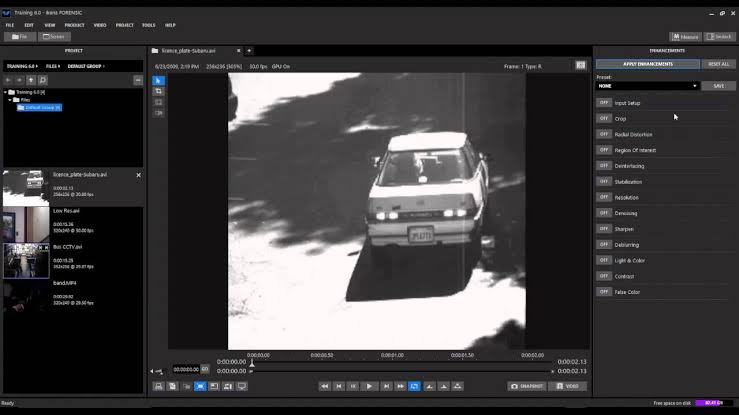In the world of forensic video enhancement, technology is a powerful ally. Cutting-edge software and algorithms can work wonders in improving the quality of surveillance footage, dashcam recordings, and other forms of video evidence. However, behind the scenes, there’s a crucial element that often goes unnoticed but is indispensable: the human touch. In this blog post, we’ll explore the vital role of expertise and human intervention in forensic video enhancement.
The Science and Art of Enhancement
Forensic video enhancement is both a science and an art. While technology provides the tools, it’s the skilled forensic video analysts who wield them effectively. Here’s how human expertise comes into play:
Understanding the Context
One of the fundamental aspects of forensic video enhancement is understanding the context of the footage. Analysts need to know the circumstances of the recording, the equipment used, and any relevant details about the incident. This contextual information helps guide the enhancement process and ensures that the right techniques are applied.
Assessing Quality
Not all video evidence is created equal. Some footage may suffer from severe degradation, low resolution, or other challenges. Expert analysts are trained to assess the quality of the video and determine what enhancements are possible and which limitations exist. They can make informed decisions about the feasibility of improving specific aspects of the footage.
Selecting the Right Tools
Forensic video enhancement software offers a wide range of tools and filters. Analysts must choose the appropriate ones for each situation. Whether it’s sharpening, noise reduction, or color correction, the human touch ensures that enhancements are tailored to the unique characteristics of the video.
Balancing Enhancements
Enhancing video footage isn’t a one-size-fits-all process. Analysts must strike a balance between improving clarity and preserving authenticity. Over-enhancing can lead to distortion and misinterpretation, which could be detrimental in legal proceedings. Skilled analysts have the judgment to apply enhancements judiciously.

The Role of Experience in Forensics Video Enhancement
Experience is a critical factor in forensic video enhancement. It’s through years of practice and exposure to various types of footage that analysts refine their skills. Here’s why experience matters:
Recognizing Patterns
Experienced analysts can quickly recognize patterns in video evidence. They can identify subtle details that might elude less seasoned professionals. This skill is invaluable when trying to uncover critical information, such as identifying a suspect or verifying an alibi.
Handling Challenges
Not every video enhancement project is straightforward. Some cases involve complex challenges like extremely low-light conditions, severe pixelation, or multiple sources of video. Experience equips analysts with the problem-solving skills needed to tackle these situations effectively.
Staying Current
Technology in the field of forensic video enhancement is continually evolving. Experienced analysts stay up-to-date with the latest advancements, ensuring that they can leverage new tools and techniques to enhance video evidence more effectively.
Ethical Considerations in Forensic Video Enhancement
The human touch in forensic video enhancement also extends to ethical considerations. Analysts must be mindful of privacy, consent, and the potential impact of their work. Here are some ethical aspects they must navigate:
- Consent and Privacy
When enhancing video evidence, analysts must consider the privacy of individuals captured in the footage. Consent may be required for certain enhancements, particularly when they involve facial recognition or other identifying information.
- Avoiding Misrepresentation
Enhancements should aim to clarify and reveal the truth, not manipulate or misrepresent it. Analysts must be vigilant to avoid creating misleading or biased interpretations of video evidence.
Conclusion
Forensic video enhancement may be driven by technology, but it thrives on the expertise, experience, and ethical considerations brought by skilled analysts. Their ability to understand the context, assess video quality, select the right tools, and strike a balance in enhancements is what ultimately brings clarity to the most challenging cases.
The human touch in forensic video enhancement is a testament to the interdisciplinary nature of the field, where technology and human judgment collaborate to uncover the truth. It’s a reminder that, while algorithms and software are powerful tools, the artistry of the human analyst remains an irreplaceable element in the quest for justice and clarity in video evidence.





